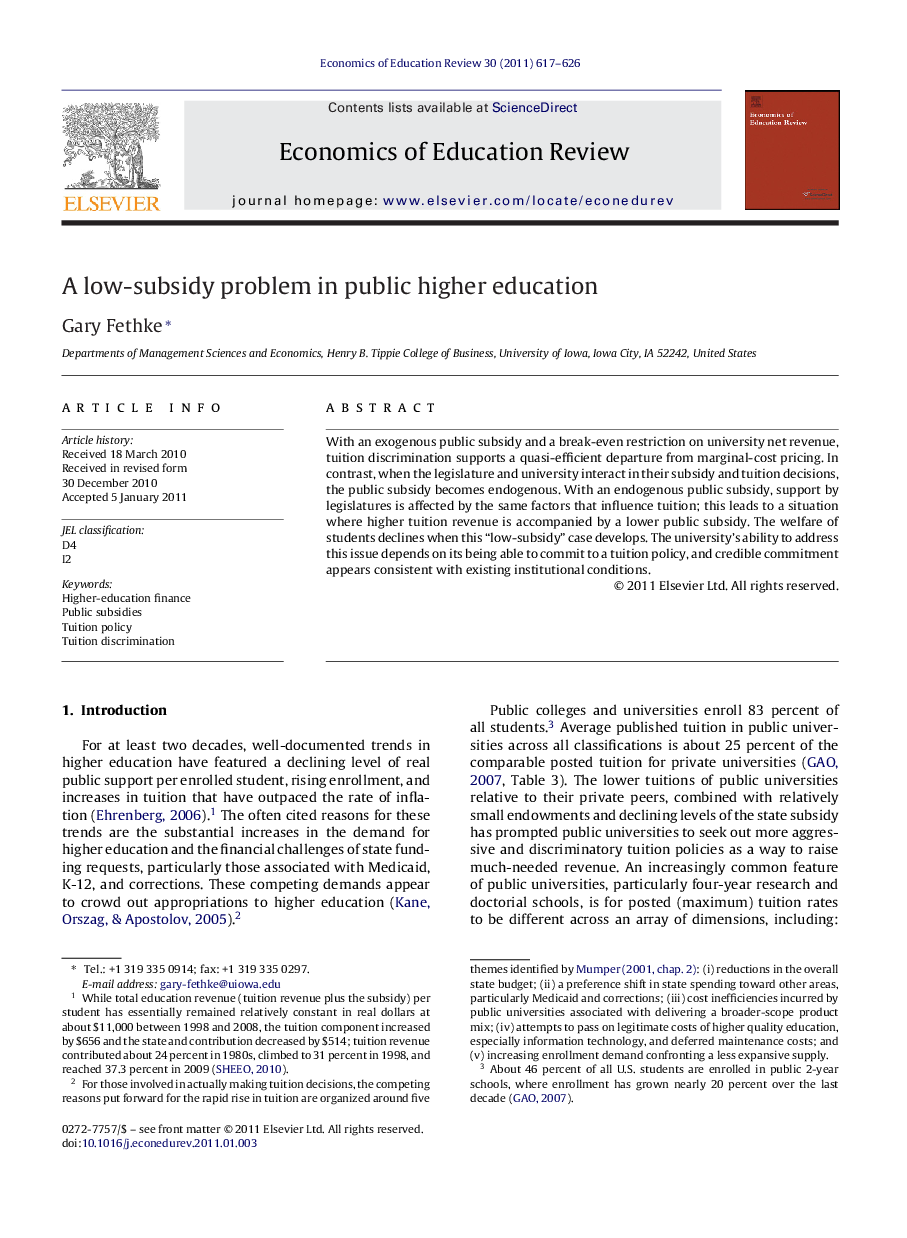| کد مقاله | کد نشریه | سال انتشار | مقاله انگلیسی | نسخه تمام متن |
|---|---|---|---|---|
| 354616 | 1434840 | 2011 | 10 صفحه PDF | دانلود رایگان |

With an exogenous public subsidy and a break-even restriction on university net revenue, tuition discrimination supports a quasi-efficient departure from marginal-cost pricing. In contrast, when the legislature and university interact in their subsidy and tuition decisions, the public subsidy becomes endogenous. With an endogenous public subsidy, support by legislatures is affected by the same factors that influence tuition; this leads to a situation where higher tuition revenue is accompanied by a lower public subsidy. The welfare of students declines when this “low-subsidy” case develops. The university's ability to address this issue depends on its being able to commit to a tuition policy, and credible commitment appears consistent with existing institutional conditions.
Research highlights▶ Public subsidies and tuitions depend endogenously on university costs, state budgets, and the preferences of legislators, governing boards and students. ▶ Subsidies that offset fixed costs reduce distortions in demand, allowing tuitions to be set closer to marginal cost. ▶ Discriminatory tuition, as compared to uniform tuition, leads to an increase in enrollment, but to a reduction in the subsidy per student, which is called the “low subsidy problem”. ▶ Commitment to uniform tuition circumvents the low-subsidy problem, with the principle benefit to consumers being a higher level of public support.
Journal: Economics of Education Review - Volume 30, Issue 4, August 2011, Pages 617–626